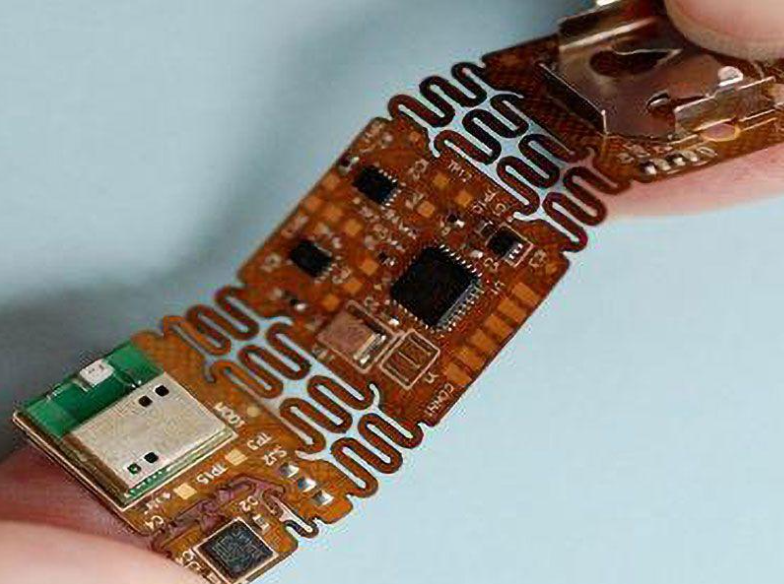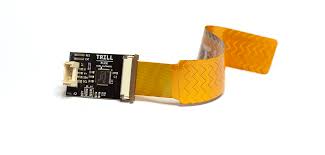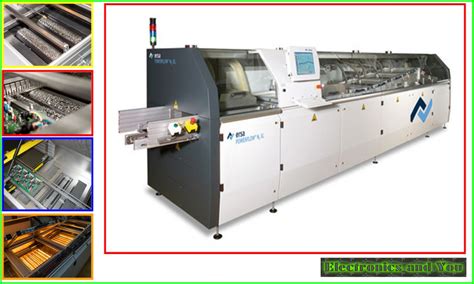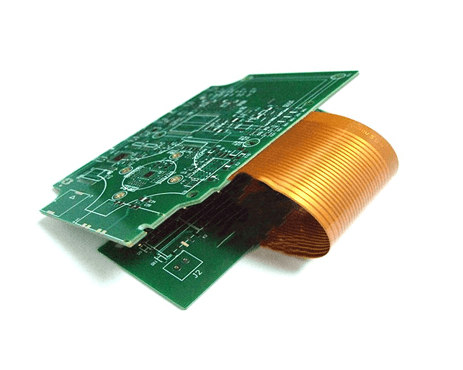Advanced circuits flex pcb
Flexible PCB Design Tips in Advanced circuits flex pcb design, flexible printed circuit boards (Flex PCBs) are favored for their unique advantages.
First, the design of flexible PCBs needs to consider their physical properties.
Unlike traditional rigid PCBs, flexible PCBs can be bent and folded, which makes them particularly useful in space-constrained applications.
However, this flexibility also brings design challenges. To ensure the reliability of the circuit, designers must carefully consider the bending radius and stress distribution.
By using appropriate materials and optimized layout, stress concentration can be effectively reduced, thereby extending the service life of the circuit.
Next, signal integrity is another key factor in flexible PCB design.
Due to the structural characteristics of flexible PCBs, the signal transmission path may be affected by bending and movement. To maintain signal integrity, designers should adopt differential pair routing and shielding techniques.
In addition, reasonable stacking design and ground plane layout can also help reduce electromagnetic interference (EMI) and crosstalk. Through these methods, the stability and reliability of signal transmission can be ensured in high-frequency applications.
In addition, thermal management is equally important in flexible PCB design.
Due to the low thermal conductivity of flexible materials, the accumulation of heat may affect the performance and life of the circuit. To solve this problem, designers can use thermal conductive materials and heat sinks, or add heat dissipation channels to the design.
By optimizing the thermal management solution, the heat dissipation efficiency of the circuit can be effectively improved to ensure its stable operation in high temperature environments.
In terms of manufacturing process, the production of flexible PCBs requires special processes and equipment.
Compared with rigid PCBs, the manufacturing process of flexible PCBs is more complicated and requires precise control and high-quality materials. In order to ensure the consistency and reliability of products, manufacturers should strictly follow industry standards and conduct comprehensive quality inspections. In addition, choosing the right suppliers and partners is also an important part of ensuring the quality of flexible PCBs.
Finally, cost control is an important consideration in flexible PCB design.
Although flexible PCBs have irreplaceable advantages in some applications, their manufacturing costs are usually high. In order to reduce costs while ensuring performance, designers can achieve this goal by optimizing the design, selecting appropriate materials and processes, and working closely with suppliers. By comprehensively considering various factors, the best balance between cost and performance can be found.
In summary, flexible PCBs have broad application prospects in advanced circuit design, but they also face many challenges. By deeply understanding the design techniques in terms of its physical properties, signal integrity, thermal management, manufacturing process and cost control, designers can effectively meet these challenges and develop high-performance and high-reliability flexible circuit solutions.

Flexible PCB Applications in IoT Devices
The increasing application of flexible printed circuit boards (Flex PCBs) in IoT devices has become a key factor in promoting the development of this technology field.
Compared with traditional rigid PCBs, flexible PCBs are able to bend and fold in three-dimensional space, which allows them to adapt to a variety of complex device shapes and sizes. This feature is particularly important in IoT devices, as these devices usually need to be miniaturized and lightweight for easy carrying and installation.
In addition, the high reliability and durability of flexible PCBs are also one of the reasons for their widespread use in IoT devices. IoT devices usually need to operate in various harsh environments, such as high temperature, low temperature, humidity and vibration.
Due to the particularity of its materials and structure, flexible PCBs can maintain stable performance in these environments, thereby ensuring the normal operation of the equipment. This is especially critical for IoT devices that need to work continuously for a long time.
At the same time, flexible PCBs also have good electrical properties, which makes them excel in high-frequency signal transmission and high-speed data processing.
IoT devices usually need to process a large amount of data and need to transmit this data quickly and stably.
The low resistance and low inductance characteristics of flexible PCBs enable them to effectively reduce signal loss and interference, thereby improving the speed and reliability of data transmission.
This is of great significance for IoT applications that require real-time data processing and transmission, such as smart homes, smart transportation and industrial automation.
Further, the manufacturability and cost-effectiveness of flexible PCBs are also an important factor in their widespread use in IoT devices.
With the continuous advancement of production technology, the manufacturing cost of flexible PCBs has gradually decreased, making them more economical in large-scale production.

In addition, the design flexibility of flexible PCBs enables them to be seamlessly integrated with other electronic components and modules, thereby simplifying the design and manufacturing process of IoT devices. This not only improves production efficiency, but also reduces production costs.
In short, the application of flexible PCBs in IoT devices not only improves the performance and reliability of the equipment, but also promotes the rapid development of IoT technology.
With the continuous popularization of IoT devices and the continuous advancement of technology, flexible PCBs will play an increasingly important role in this field. Through continuous innovation and optimization, flexible PCBs will provide better solutions for IoT devices and help the further development and application of IoT technology.
How to Choose Suitable Flexible PCB Materials
When choosing suitable flexible PCB materials, the first thing to consider is the mechanical properties of the material. The main advantage of flexible PCBs is that they can bend and fold in a small space, so the flexibility and durability of the material are crucial.
Polyimide (PI) and polyester (PET) are two common flexible PCB substrates. Polyimide has excellent thermal stability and mechanical strength, and is suitable for high temperature environments and applications that require frequent bending.
In contrast, polyester materials are less expensive, but their heat resistance and mechanical properties are relatively weak, and they are suitable for applications that do not require high temperatures.
Next, electrical performance is also an important consideration when selecting flexible PCB materials.
The dielectric constant and dielectric loss of different materials will affect the signal transmission quality of the circuit.Polyimide materials have a low dielectric constant and low dielectric loss, which are suitable for high-frequency signal transmission.
However, the dielectric constant and dielectric loss of polyester materials are higher, which may affect the integrity of high-frequency signals. Therefore, in high-frequency applications, polyimide materials are more ideal.
In addition, environmental adaptability is also a factor that cannot be ignored when selecting flexible PCB materials.
Flexible PCBs are often used in various complex environments, such as high humidity, high temperature, and low temperature.
Polyimide materials have excellent chemical resistance and moisture resistance, and can maintain stable performance in harsh environments. Polyester materials are easy to absorb moisture in high humidity environments, which may lead to a decrease in electrical performance.
Therefore, in applications that require high environmental adaptability, polyimide materials have more advantages.
At the same time, cost is also one of the factors that need to be weighed when selecting flexible PCB materials.
Although polyimide materials have obvious advantages in performance, their high cost may not be suitable for projects with limited budgets. Although polyester materials lack in performance, they are low-cost and suitable for mass production and applications with low performance requirements.
Therefore, when selecting materials, it is necessary to make comprehensive considerations based on the specific application scenario and budget.
Finally, the compatibility of the manufacturing process is also a factor that needs to be considered when selecting flexible PCB materials.
Different materials have different requirements for process parameters such as temperature and pressure during the manufacturing process.
Polyimide materials have good stability at high temperatures and are suitable for complex manufacturing processes. However, polyester materials are prone to deformation at high temperatures and require strict temperature control during the manufacturing process.
Therefore, when selecting materials, it is necessary to consider the compatibility of the manufacturing process to ensure the smooth progress of the production process.
In summary, the selection of suitable flexible PCB materials requires comprehensive consideration of mechanical properties, electrical properties, environmental adaptability, cost, and manufacturing processes.
By weighing these factors, the flexible PCB material that best suits the specific application needs can be selected to achieve the best performance and cost-effectiveness.
Flexible PCB Manufacturing Process Detailed Explanation
Flexible printed circuit boards (Flex PCBs) play a vital role in modern electronic devices, and their manufacturing process is complex and delicate. First, the manufacture of flexible PCBs begins with the selection of substrates.
Generally, polyimide (PI) and polyester (PET) are the most commonly used substrates because of their excellent flexibility and heat resistance. The choice of substrate directly affects the performance and application range of the final product.
Next, the attachment of copper foil is one of the key steps in the manufacture of flexible PCBs. Copper foil is usually attached to the substrate by calendering or electroplating. Calendered copper foil has better ductility and fatigue resistance, while electroplated copper foil has more advantages in cost and production efficiency.
Regardless of the method used, the thickness and uniformity of the copper foil need to be strictly controlled to ensure the conductivity and reliability of the circuit.
Then, the graphic transfer process is the process of transferring the circuit design from the drawing to the copper foil. Photolithography is usually used to accurately transfer the circuit pattern to the copper foil through photosensitive materials and ultraviolet exposure. The exposed copper foil is developed and etched to form the required circuit pattern. This process requires high-precision equipment and strict process control to avoid problems such as graphic distortion and short circuit.
After the graphic transfer is completed, the next step is the drilling and electroplating process. Drilling is used to create through holes and blind holes on the flexible PCB to achieve electrical connections between multi-layer circuits. The drilling accuracy directly affects the connection reliability of the circuit. The electroplating process deposits a layer of conductive material, usually copper, on the hole wall and the circuit surface to enhance the stability and conductivity of the electrical connection.
Subsequently, the application of the cover film is an important step to protect the flexible PCB. The cover film is usually made of polyimide or polyester material and is fixed to the circuit surface by heat pressing or adhesive. The cover film not only provides mechanical protection, but also prevents the circuit from moisture and oxidation, thereby extending the service life of the flexible PCB.
Finally, the testing and inspection of flexible PCBs is a key link in ensuring product quality. Tests usually include electrical performance tests, mechanical performance tests, and environmental adaptability tests. Through these tests, defects that may occur during the manufacturing process can be discovered and corrected to ensure that each flexible PCB meets the design requirements and quality standards.
In summary, the manufacturing process of flexible PCBs involves multiple complex and delicate steps, each of which requires strict process control and high-precision equipment support. Only through a scientific and reasonable manufacturing process can high-quality and high-reliability flexible PCBs be produced to meet the needs of modern electronic equipment for lightweight, flexibility, and high performance.
Innovative Application of Flexible PCB in Medical Equipment
The innovative application of flexible printed circuit boards (Flex PCB) in medical equipment is gradually becoming an important driving force for the development of modern medical technology. First of all, the unique characteristics of flexible PCB give it significant advantages in medical equipment. Due to its flexibility and lightness, flexible PCB can adapt to complex equipment shapes and structures, which is difficult to achieve in traditional rigid circuit boards. This adaptability not only increases the design freedom of the equipment, but also enables the equipment to better fit the curves of the human body, thereby improving the comfort of patients and the use effect of the equipment.
In addition, the application of flexible PCBs in medical devices has significantly improved the reliability and durability of the equipment. Traditional rigid circuit boards are prone to breakage and failure when faced with frequent bending and movement, while flexible PCBs can withstand higher mechanical stress and reduce the maintenance and replacement frequency of equipment. This is especially important for medical devices that need to work continuously for a long time, such as pacemakers and wearable health monitoring devices.
At the same time, the high-density integration capability of flexible PCBs also makes it possible for medical devices to be miniaturized and multifunctional. Modern medical devices are increasingly pursuing miniaturization and portability for daily carrying and use by patients. Flexible PCBs can integrate more electronic components in a limited space, thereby realizing the multifunctionality of the equipment. For example, flexible PCBs can integrate sensors, processors, and wireless communication modules, so that the equipment can not only monitor the patient’s health data in real time, but also transmit the data to the doctor’s terminal device via wireless networks, which is convenient for remote diagnosis and treatment.
Further, the application of flexible PCBs in medical devices has also promoted the development of personalized medicine. Since flexible PCBs can be customized according to specific needs, medical device manufacturers can more flexibly design and produce equipment that meets the needs of different patients. This personalized medical device can more accurately meet the treatment needs of patients, improve treatment effects and patient satisfaction.
Finally, the application of flexible PCB in medical equipment has also promoted the innovation and progress of medical technology. With the continuous development of flexible PCB technology, more and more new medical devices have been introduced. For example, new devices such as flexible electronic skin and smart bandages use the advantages of flexible PCB to achieve real-time monitoring and intelligent management of patients’ health status. These innovative devices not only improve the quality of medical services, but also open up new directions for the development of medical technology.
In summary, the innovative application of flexible PCB in medical equipment not only improves the performance and reliability of the equipment, but also promotes the miniaturization, multifunctionality and personalization of medical equipment. With the continuous advancement of technology, flexible PCB will play an increasingly important role in the medical field and inject new vitality into the development of modern medical technology.
Conclusion
Flexible printed circuit board (Flex PCB) is a kind of high-density wiring that can be achieved in a limited space.






